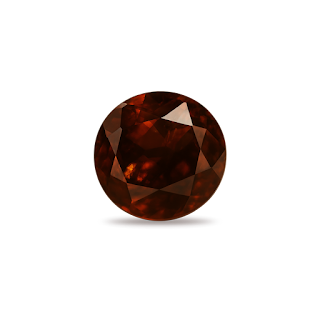In the vast tapestry of Earth’s geological treasures, few minerals captivate the imagination like Monazite. This enigmatic gemstone, often overshadowed by its glittering cousins like diamond or sapphire, holds secrets that bridge ancient history and cutting-edge technology. Not just a stone of beauty, Monazite is a linchpin in renewable energy, electronics, and even aerospace. But its radioactive heartbeat and rarity make it a subject of fascination and caution. Dive into the world of Monazite-a gemstone as complex as it is compelling.
What is Monazite?
Monazite is a rare earth phosphate mineral primarily composed of cerium, lanthanum, neodymium, and thorium, the latter rendering it mildly radioactive. Discovered in the early 19th century, its name derives from the Greek word monazein (“to be solitary”), referencing its tendency to appear isolated in early finds. Unlike conventional gemstones, Monazite’s value lies not just in aesthetics but in its critical role as a source of rare earth elements (REEs), essential for modern technology.
Physical and Chemical Properties
Monazite’s allure begins with its physical traits:
- Color: Ranges from reddish-brown and yellow to green, depending on its elemental composition.
- Luster: Resinous to vitreous, giving it a subtle glow.
- Hardness: 5-5.5 on the Mohs scale, making it softer than quartz but durable enough for specific uses.
- Density: High specific gravity (4.6-5.7), a hallmark of its dense rare earth content.
- Radioactivity: Contains thorium and uranium, emitting low-level alpha radiation.
Chemically, its formula varies as (Ce,La,Nd,Th)PO₄, reflecting its role as a primary ore for rare earths.
Types of Monazite
Monazite is classified by its dominant rare earth element:
- Monazite-Ce: Rich in cerium, the most common variant.
- Monazite-La: Lanthanum-dominant, rarer and often found in specific granitic deposits.
- Monazite-Nd: High in neodymium, crucial for magnets in wind turbines and EVs.
- Monazite-Th: Thorium-heavy, historically used in nuclear applications but now less common due to safety concerns.
Geological Occurrence and Mining
Monazite forms in igneous and metamorphic rocks but is most often found in placer deposits-concentrated by water erosion in riverbeds or coastal sands. Major sources include:
- India: Kerala and Orissa beaches, pivotal in thorium-based nuclear research.
- Brazil: Coastal sands rich in rare earths.
- Australia, South Africa, and the USA: Key players in sustainable rare earth mining.
Mining Monazite involves extracting heavy minerals from sands, followed by chemical processing to isolate REEs. However, its radioactivity demands strict environmental and safety protocols.
Historical Significance
Monazite’s story began in 1829 when German mineralogist Johann Friedrich August Breithaupt identified it. Initially mistaken for other minerals, its true potential emerged in the late 1800s with the discovery of thorium’s radioactive properties. By the 20th century, Monazite became a strategic resource:
- Gas Mantles: Thorium from Monazite lit streets worldwide via gas lamps.
- World Wars: Sourced for thorium in defense tech, sparking global competition.
- Space Age: Rare earths from Monazite fueled Cold War innovations.
Industrial Applications
Monazite’s real power lies in its industrial versatility:
- Renewable Energy: Neodymium and praseodymium are vital for wind turbine magnets.
- Electronics: Cerium polishes glass for smartphones and LCDs.
- Catalysts: Lanthanum refines petroleum and reduces vehicle emissions.
- Defense & Aerospace: REEs strengthen alloys for jets and missiles.
Monazite in Jewelry: A Controversial Choice
While Monazite’s warm hues and uniqueness attract collectors, its radioactivity limits jewelry use. Most specimens emit radiation below harmful levels, but prolonged skin contact is discouraged. Some artisans encapsulate Monazite in protective settings or use thorium-depleted stones. Collectors prize raw crystals for their metaphysical appeal rather than daily wear.
Metaphysical Beliefs and Healing Properties
In crystal healing circles, Monazite is believed to:
- Energize Creativity: Linked to the sacral and solar plexus chakras.
- Grounding: Its earthy tones are thought to stabilize emotions.
- Protection: Allegedly shields against negative energy.
Note: These claims lack scientific backing, and its radioactivity warrants caution in holistic practices.
Handling and Safety Precautions
Safety is paramount with Monazite:
- Storage: Keep in ventilated, lead-lined containers away from living spaces.
- Handling: Use gloves and limit exposure; avoid inhaling dust.
- Disposal: Follow local regulations for radioactive materials.
Consult experts before acquiring Monazite, especially in households with children or pregnant individuals.
Monazite’s Role in Green Technology
As the world pivots to sustainability, Monazite is indispensable:
- Electric Vehicles: Neodymium powers high-efficiency motors.
- Solar Panels: Rare earths enhance photovoltaic cell efficiency.
- Nuclear Reactors: Thorium offers potential for cleaner nuclear energy.
Ethical mining practices are critical to balance ecological impact and demand.
Conclusion
Monazite is a mineral of paradoxes-a gemstone bridging beauty and utility, history and innovation. While its radioactivity demands respect, its contributions to technology and green energy are undeniable. As we harness its power, responsible stewardship ensures Monazite remains a beacon of progress, not peril. Whether admired in a collector’s cabinet or fueling a wind farm, Monazite is a testament to Earth’s hidden wonders.














0 Comments